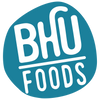
Here’s Why Eating Within an Hour of Working Out Really Matters
While you may know that a post-workout recovery snack will help build, strengthen and repair damaged muscles after exercise, you might not realize that the time frame matters too. It’s best to eat a snack that contains both protein and complex carbohydrates after exercising, along with some healthy fats to stay fuller longer and electrolytes, especially if you’ve been sweating or working out for an hour or longer.
Why? Your muscles work heavily during exercise, where they lose fluids, nutrients and electrolytes, all of which are required for muscles to be hydrated and healthy. Muscles are also cells, so they need the same nutrients and water we do to have enough energy to function. So, post-workout, you must fuel muscles (and fast!), since they’ll be lower in nutrients, which the body uses to make it through that workout.
Why an Hour Max Matters
Ideally, eating a recovery snack or meal after 30 minutes is best, but if you can’t grab something so quickly, that’s fine, just don’t let it go past an hour. Anything past and your muscles mass will begin to decrease, as your body starts to lose muscle due to lack of fuel.
An hour isn’t too long to wait before eating something after a workout, and it could be a better option for those who find exercise to suppress appetite or have back-to-back appointments with little time in between. However, if you wait too long, you will lose that necessary time frame for which your muscles feel able to build back up and grow stronger.
Plus, you’re likely exercising with the goal of developing muscle mass, as well as improvements in overall fitness level and muscular strength, mobility and definition. Don’t let lack of nutrition hold you back from making the most of your workouts and efforts.
And if you go beyond an hour, your appetite will also start to increase, where you might get to the point of feeling too hungry to think clearly and make healthy decisions about what to eat. (This is where meal-planning workout recovery snacks in advance can help guarantee a readily available and healthy snack, no matter what.)
It’s easier to reach for a snack out of convenience, like donuts from the office lounge, greasy takeout or drive-thru food, like a burger and fries from a nearby fast-food restaurant. Plus, cravings usually hit when you’re hungry or have gone too long without proper nourishment.
What to Eat Post-Workout
Good fiber means the carbs are complex, so choose snacks that list fiber on the label if you’re buying snacks from the store. If you’re making your own snacks, look for a solid combination of plant protein, fiber-containing carbohydrate sources, and heart-healthy fats to prolong its satiating effect and repair muscles.
If you aren’t sure how to get enough protein, since animal protein is more readily absorbable and tends to contain more grams of protein per serving, combine plant protein sources or find a protein bar or protein powder that has a hearty dose. You need about 15-25 grams of protein after exercising, so whatever method you choose, keep track of the number in your mind. You’ll likely get more protein through healthy fat and fiber sources, too. Some examples include nuts and seeds, nut butter, leafy greens, beans and legumes, whole grains, fruits and other vegetables.
What’s more, fiber sources containing electrolytes are even better, which means they’ll have higher intake of potassium, magnesium, calcium and sodium. Electrolytes like avocado and peanut butter are two of the best options, since they both have potassium and magnesium.
A tip? Go with lightly salted peanut butter for post-workout, especially a sweaty workout, but keep unsalted at home as well for when you’re eating nut butter during different times of the day. You don’t always need the salt in nut butter, as excess sodium isn’t good for heart health long-term.
And don’t forget fluids—your body loses water when exercising, so replenish ASAP with cold water. Putting electrolyte powder in the water is an easy way to get those in, and you can also “eat” your water with fruit and veggies that have high water content. Enjoy zucchini, watermelon, bell peppers or melon, for example, in your snack or to flavor water.











